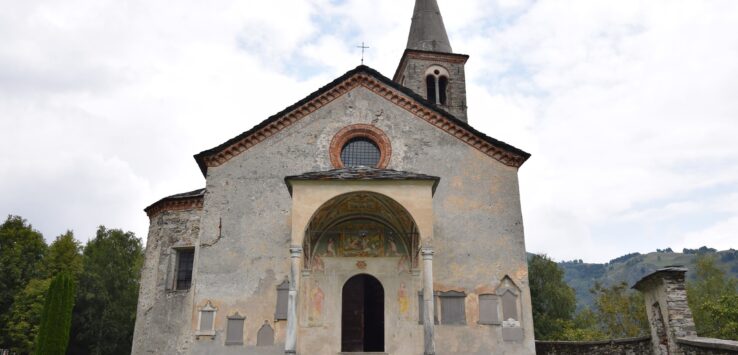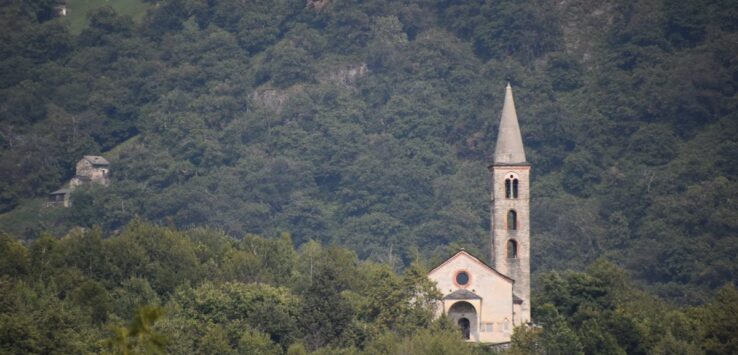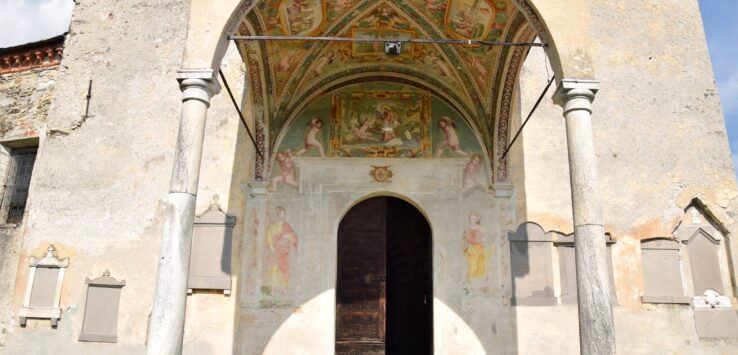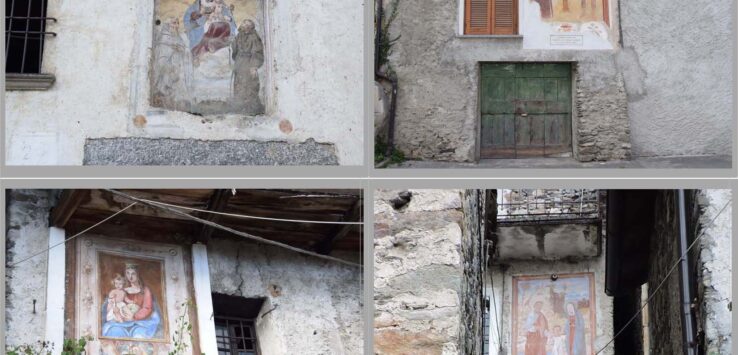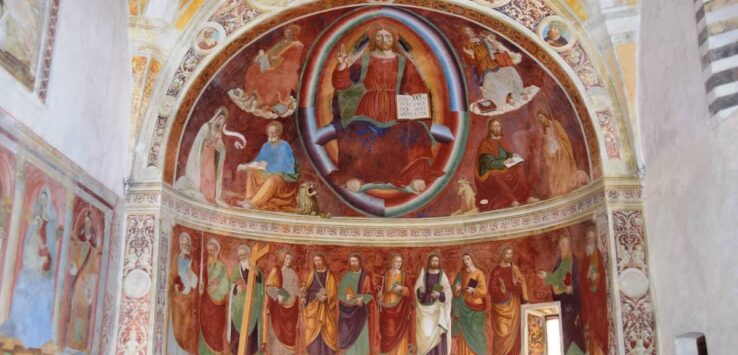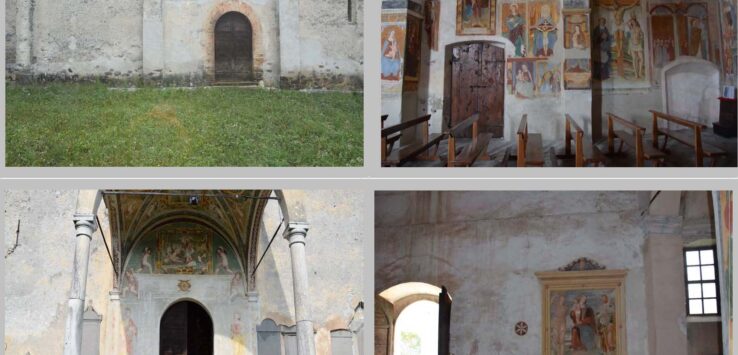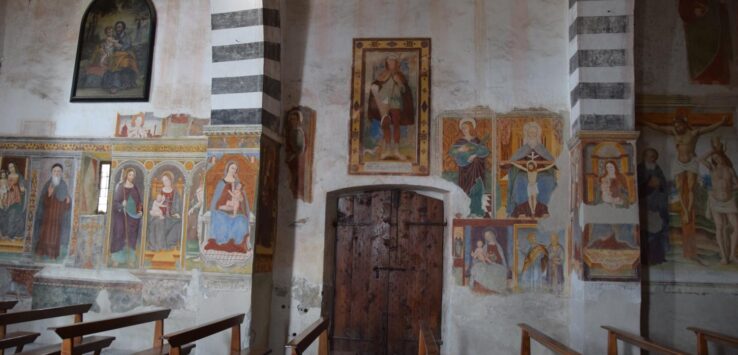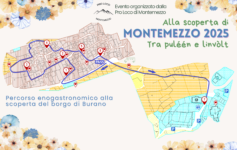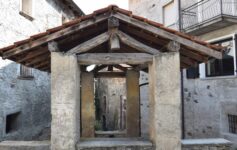Livo is a small but lovely, old mountain villaggio with a resident species of goat – the Capra di Livo – and a busy bar and pizzeria called La Baita – the hut – which claims all the village inhabitants – children, parents, and grand-parents – in the late afternoon that ends the lengthy Italian lunch break – pausa pranzo. Central to the town is a pink building with the family name ‘Pradella’ painted in large letters across the facade. This was the Trattoria e Alimentari – restaurant and grocery – of the Pradella family.
Livo, Liv in the dialet of Como, is a small town in the valley of the homonymous torrent. The town retains an ancient urban structure like many other villages in the internal valleys.
A must see is the church of “San Giacomo Vecchia” (St. James Old Church), rich in works of art.
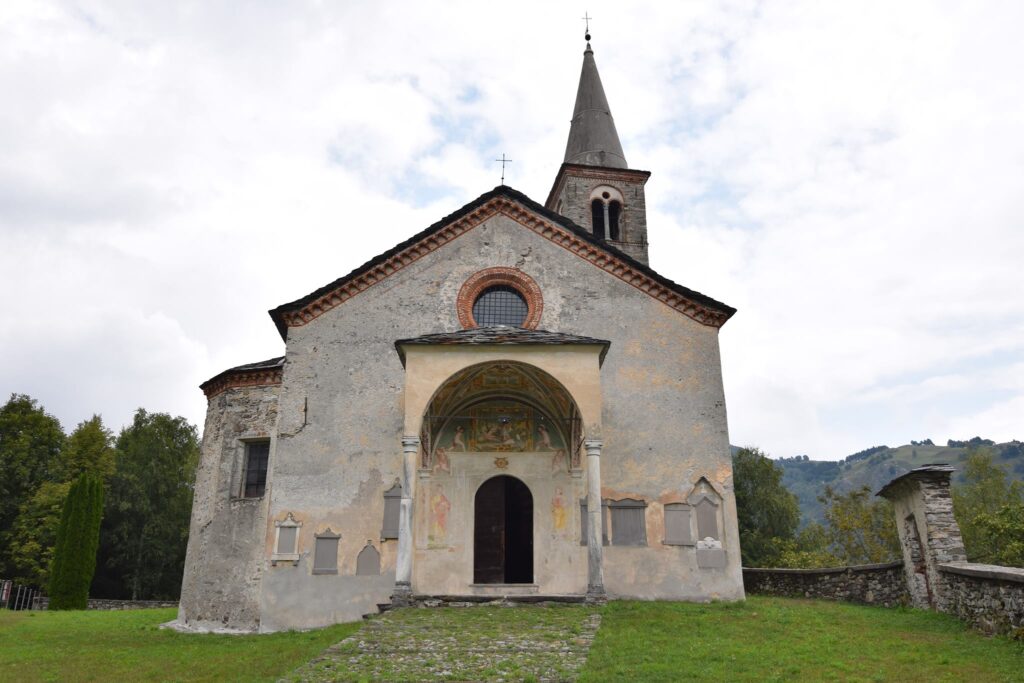
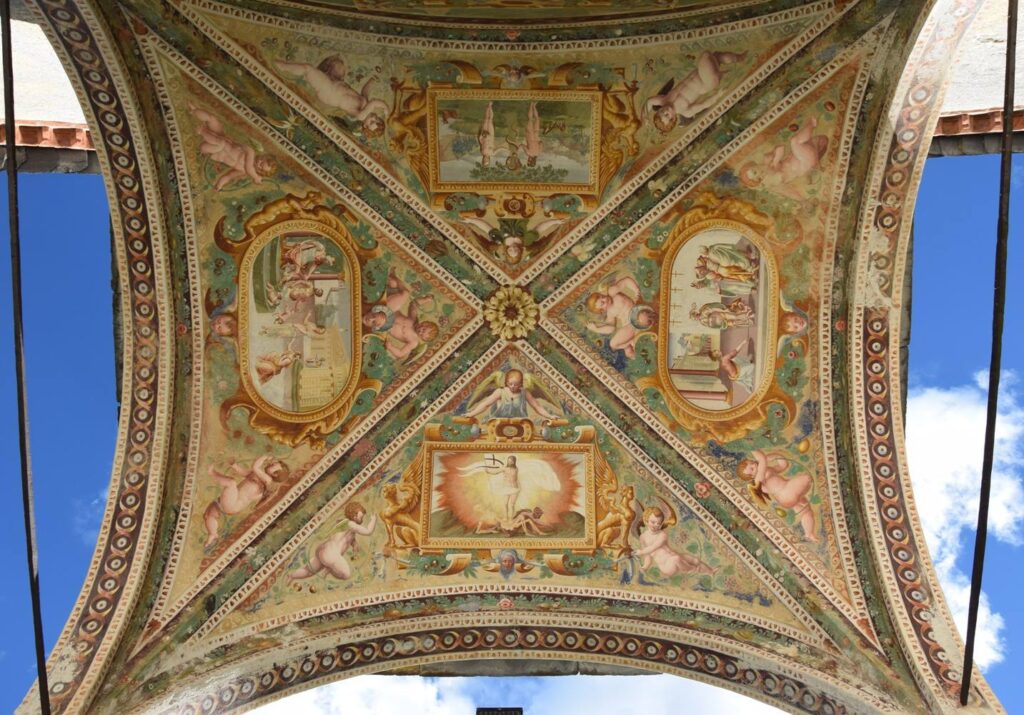
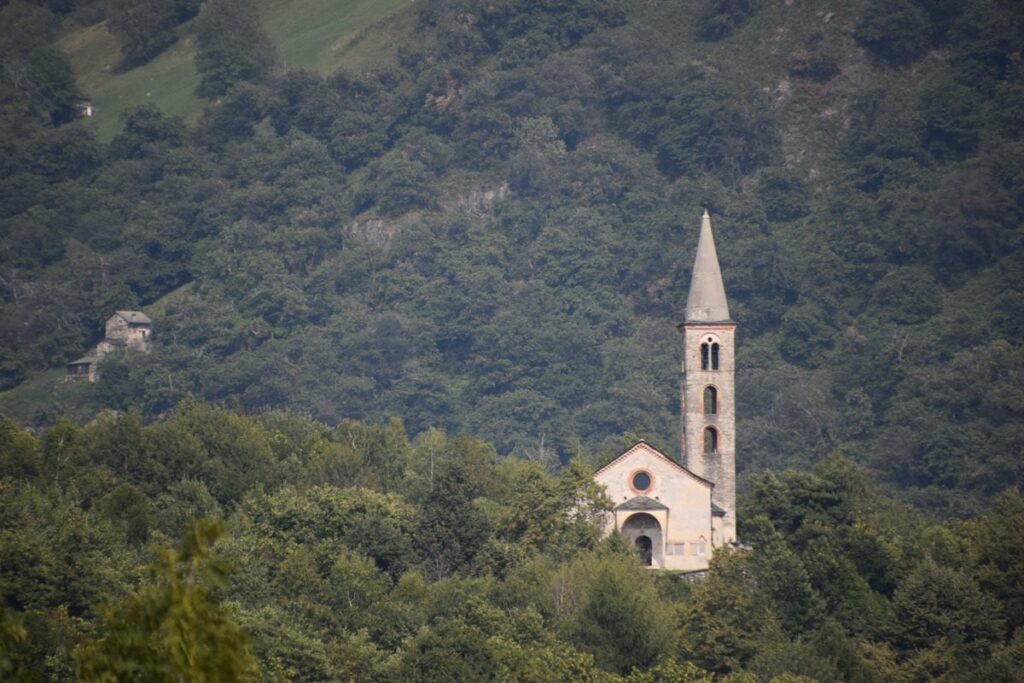
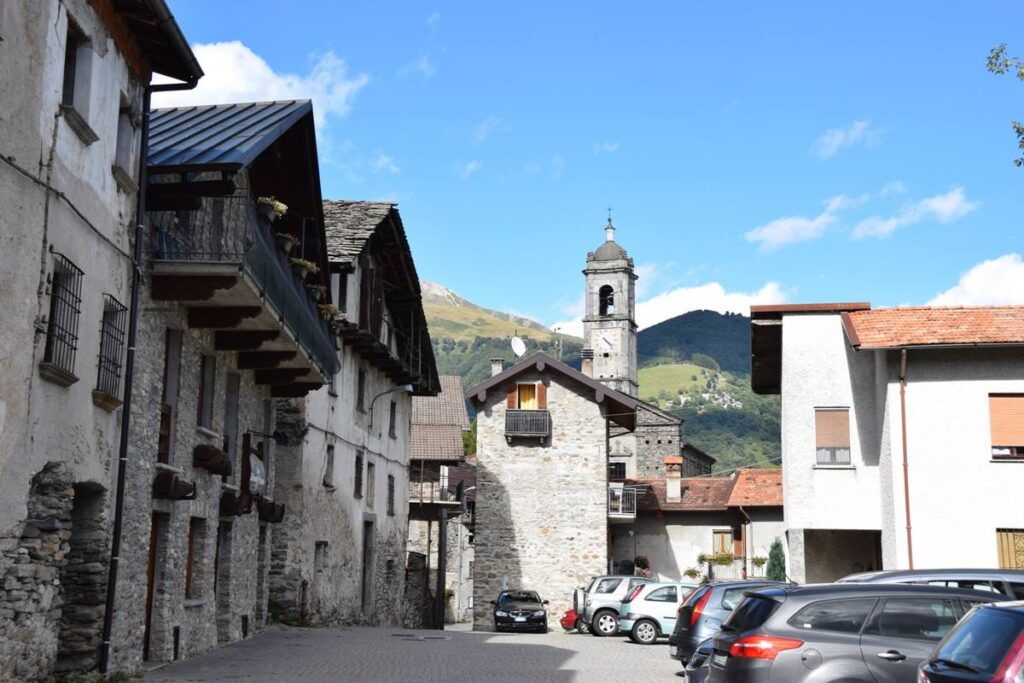
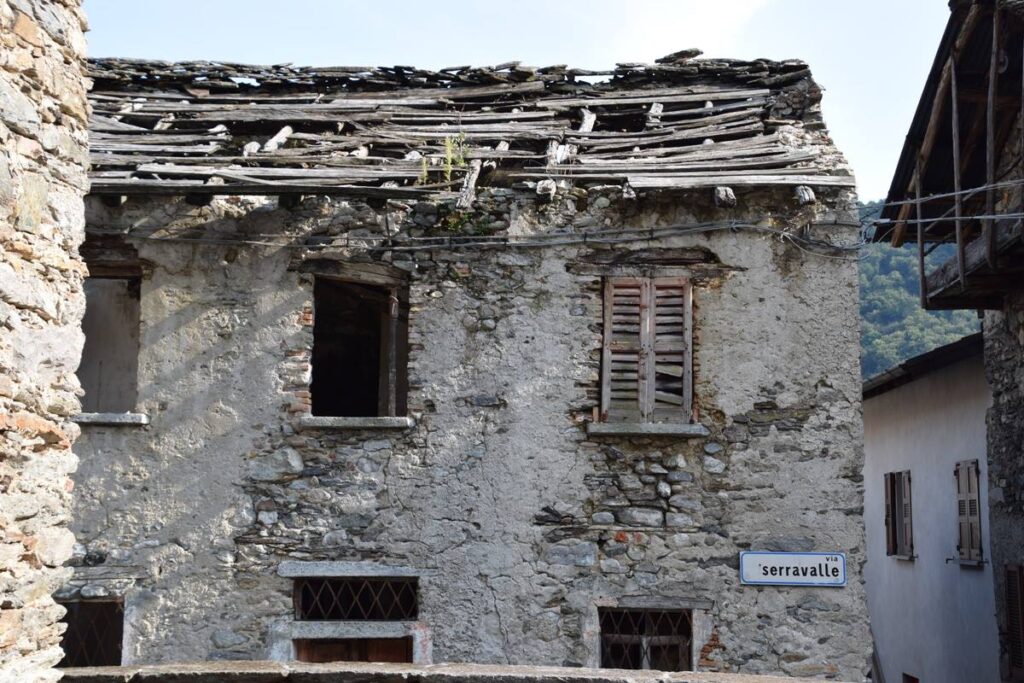

Top left: “Crotto del Eghela” (Cave of the Eagle) – the guide tells us this about the locations known as ‘crotto’: “…it’s a typical Cave in (the) Chiavenna region used as a cellar for cheese, wine, salami. Thanks to the breeze Sorel that blows inside because of the cracks in the stone blocks, the inner temperature is 8 degrees Celsius. (46.4 degrees Fahrenheit)”. Today ‘crotti’ are local places where the men go to play cards and drink wine or they are small local restaurants in rural areas that serve traditional dishes.
Top right: Garage door painted in the colors of the Italian flag.
Bottom left: Entry door to the Chiesa di San Giacomo Nuova
Bottom right: La Baita – The Hut – the local pizzeria.
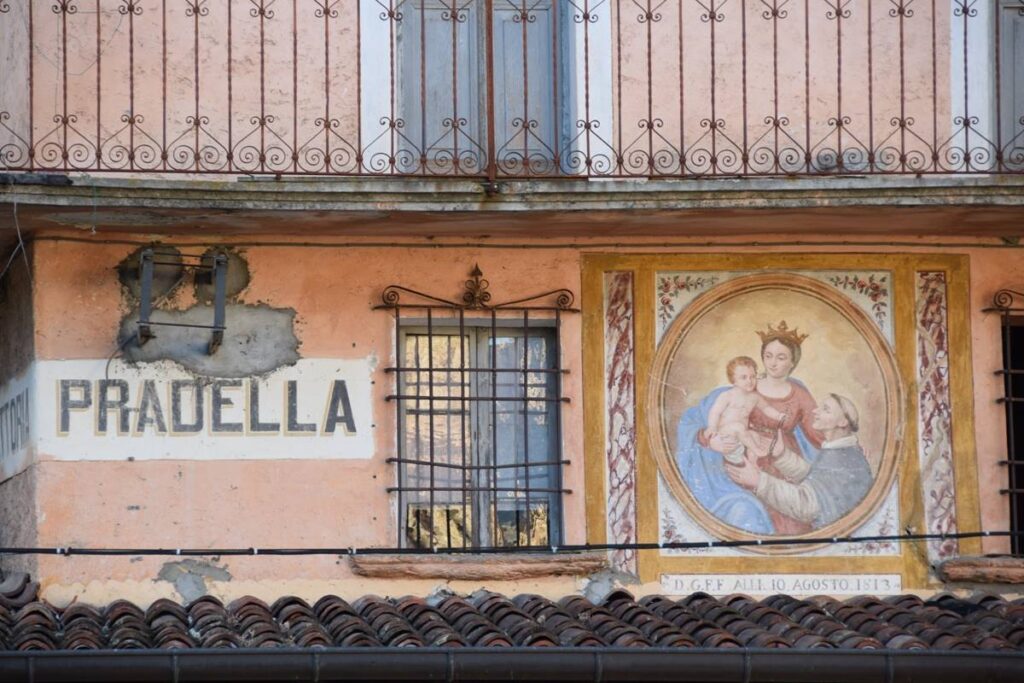
Pradella is a local family surname and specific to the Lombardy region of Italy. Perhaps these Pradella’s originally hailed from Livo.
The prosperity they enjoyed in the town might have been funded by the migratory labors of their ancestors.
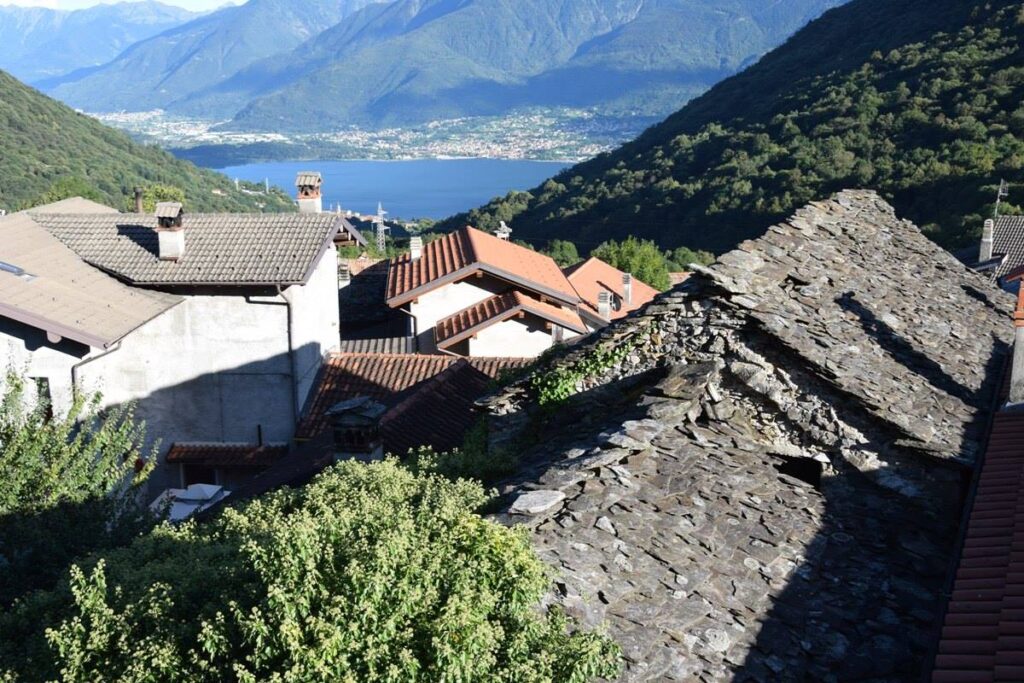
Many towns in this area suffered a long migration to Sicily that began in the mid-1500’s and lasted until the 1800’s – centuries that encompassed two waves of bubonic plague which devastated the population. The woe of those left living can be seen in the artwork of the time that sought protection from the disease with images of the 13th-century French saint who survived it – San Rocco.
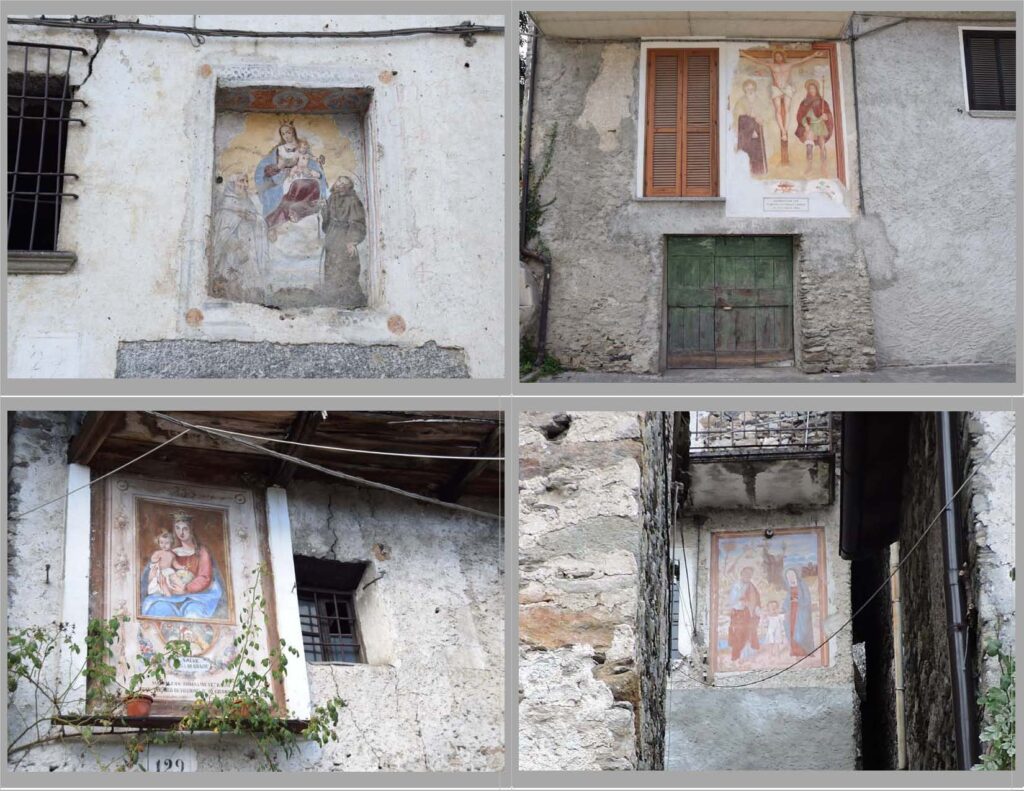
The fresco on the top right shows depicts Saint Rocco on the right with Saint Ambrose (patron saint of Milan) at Jesus’ crucifixion .
Often only men migrated leaving their women home in the mountains caring for children and parents. Husbands, fathers, and sons would labor on the island for five to ten years and return again to Lake Como. But sometimes the cool, clean airs of the mountains seduced them into permanence and they stayed their travels and brought with them the prosperity of their migration seen in the paintings they commissioned for their churches and its imagery that depicts the colorful sea corals of Sicily as necklaces draped around the necks of baby Jesus’ or as rosaries hanging from his little hands.
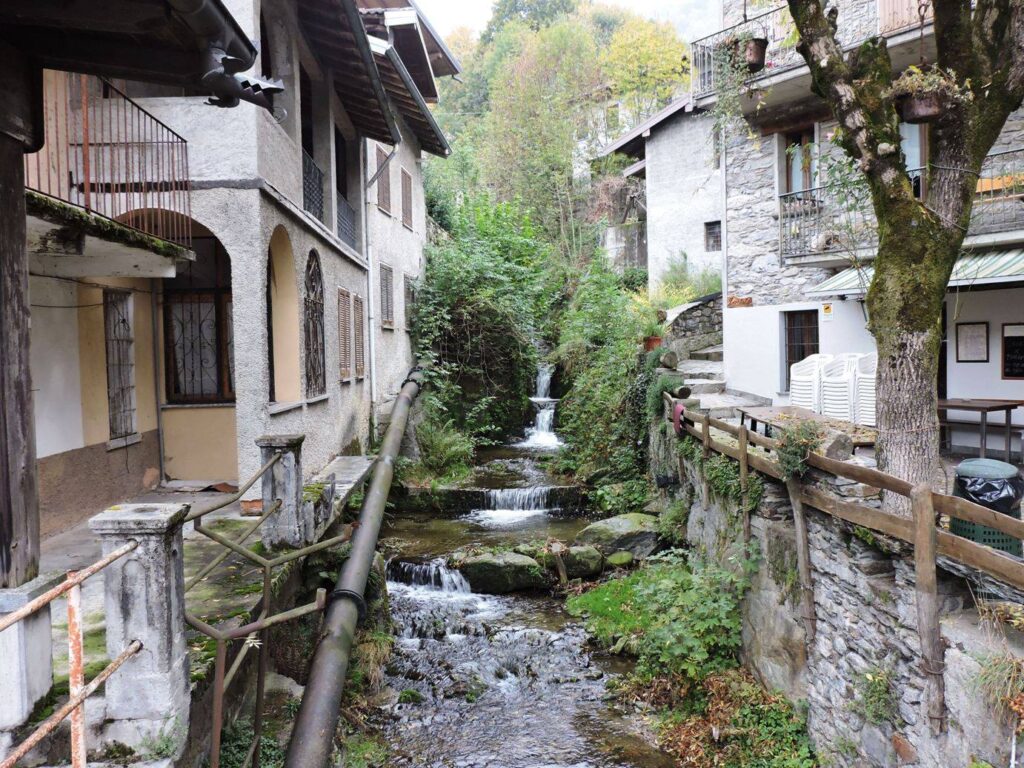
This river runs through Livo. Towns are always on a water source. The torrent of Livo begins in the Alpine basin of lake Darengo and comes from a elevation of 5,900 feet or 1800 meters and flows into lake Como through the town of Domaso on the lake.
I had a short visit and crisp walk through pretty Livo that did not result in either an open new church or a found old one. The 17th-century Church of Saint James New – Chiesa di San Giacomo Nuova – had just closed following the afternoon mass and the 13th-century Church of Saint James Old – Chiesa di San Giacomo Vecchia – turned out to be a ½ mile walk outside town and it, also, was closed. Because I was losing daylight quickly on an already darkened afternoon, I relented – regretting my failure but knowing my schedule would not allow me to return that year. However, I was back the next year in sunny September having hired a touristic guide to open the doors of the churches whose artwork I longed to see.
Because I prefer the bright primary colors of the artists of the pre-17th-century over the muted hues of the artists of more ‘recent’ times, if forced to choose it would not be the ornate but exquisite Chiesa dei Santi Eusebio e Vittore of Peglio that would win me but rather the Church of San Giacomo Vecchia in Livo – simple in its architecture but beating with the heart of the townsfolk who filled it with their hopes spoken in pigment. And so Livo was the town whose every street I walked savoring the treasures that I knew awaited on the outskirts of this ancient hamlet in the old cemetery church – Chiesa di San Giacomo Vecchia!
Because the families of ancient Livo were not affluent, the artists hired varied as did their talents. The artist’s fees were paid by the local families who – because they were poor – could often pay for only one image resulting in a painting commissioned by multiple families whose surnames were then inscribed below the feet of the saint for whose likeness they paid.
Because the churches are closed to the public except for once-a-year celebrations and infrequent Catholic Masses, in order to visit, one must hire an Italian tourist guide who negotiates with the keeper-of-the-keys for a time and price. The fee includes the salary of the guide and a donation to the church the size of which is intended to reflect one’s pleasure in the visit. The guide turistiche of Italy must complete a rigorous training course and earn a state license specific to the province about which they are experts.
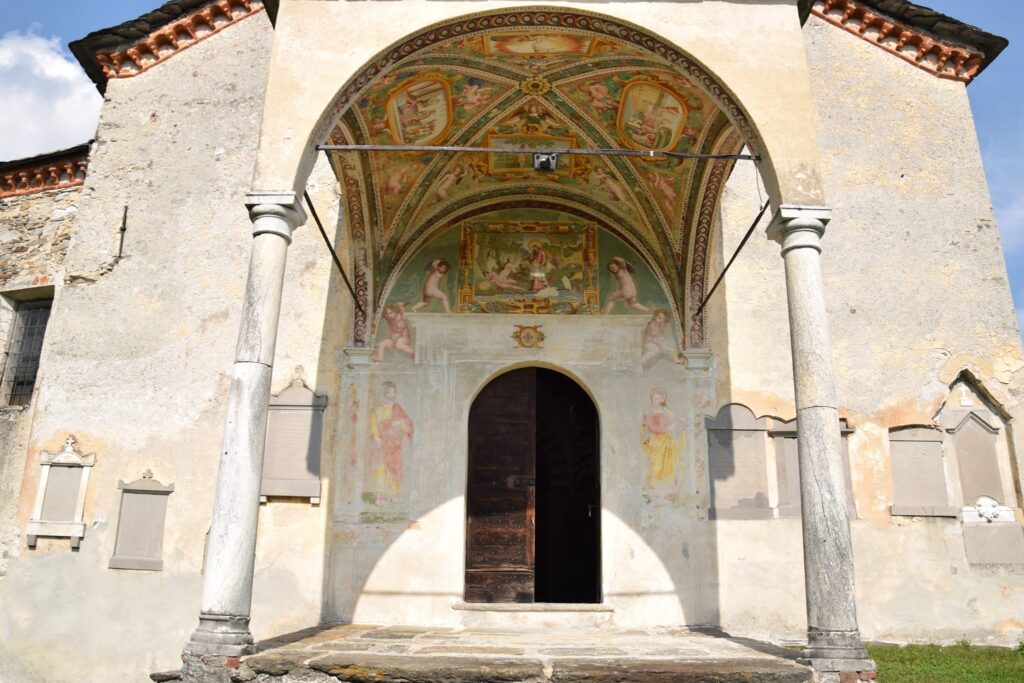

The trusses are painted to resemble the local marbles used in buildings and quarried from towns on the Lake Como – black marble from Olcio and white marble from Musso.

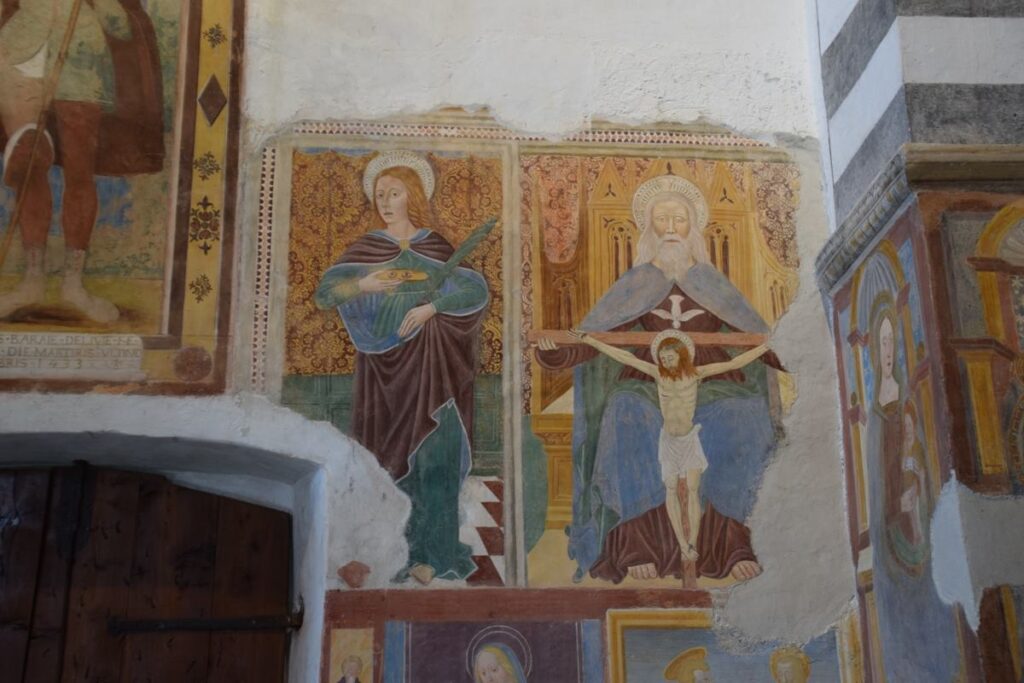
Fresco of St Lucy holding a plate with her eyes on it. She was tortured by having her eyes gouged out. To the right is the Triune Godhead – God the Father holding Jesus – God the Son on the cross with the Holy Spirit as a dove above his head.
Although the art of the Chiesa dei Santi Eusebio e Vittore in Peglio was clearly rendered by an artist of greater talent – Giovanni della Rovere – the Fiammenghino – it was the bright colors and the 27 Madonna’s of the Chiesa San Giacomo Vecchia which caught my heart and stole my breath. Interestingly, the 1614 contract for Della Rovere’s work in Peglio is held in the parish archives of Livo.
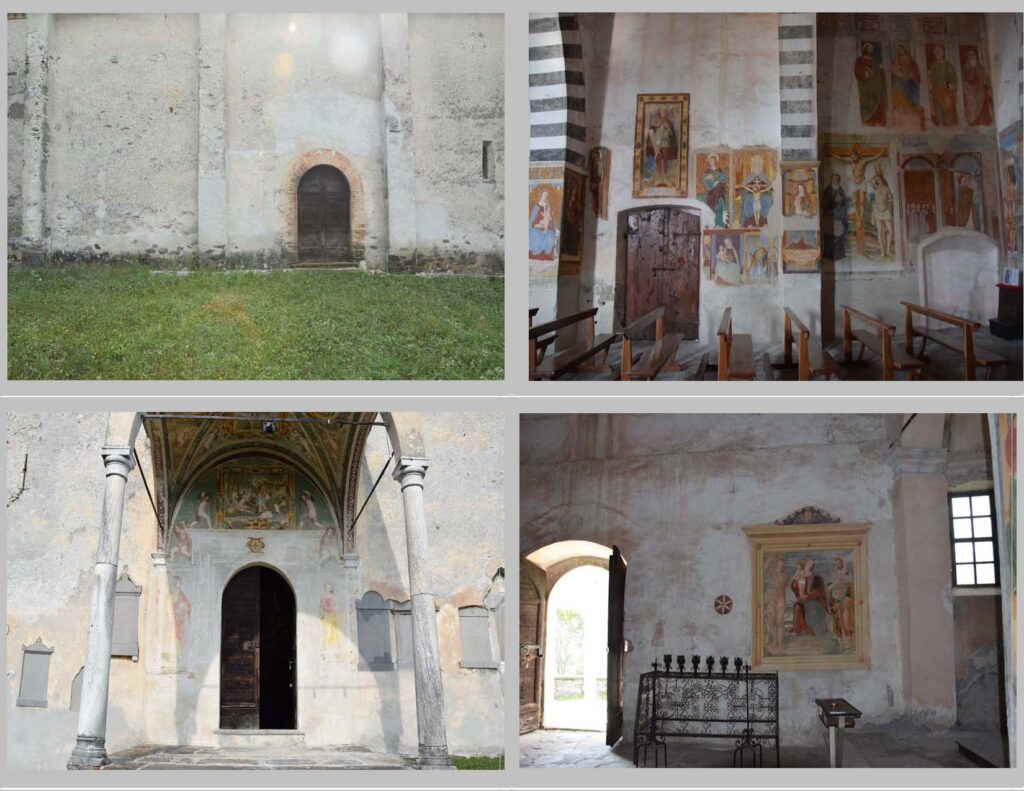
Top left: Side entry door; Top right: side entry door from inside the church; Bottom left: main entry door; Bottom right: main entry door from inside the church.
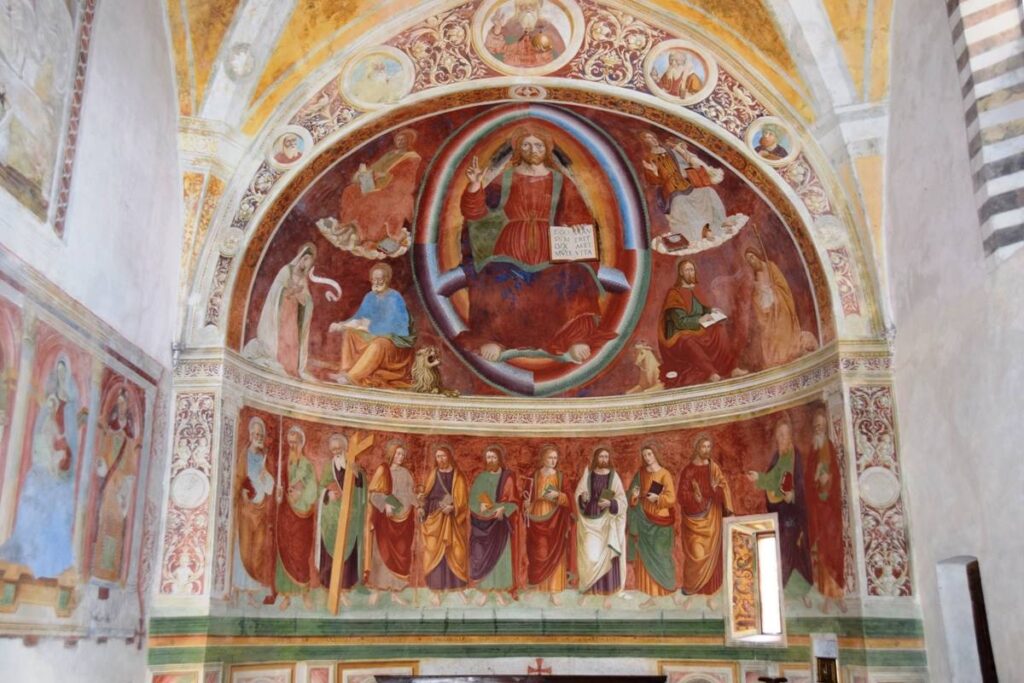
Front altar: Jesus in the mandorla surrounded by the four evangelists – Matthew, Mark, Luke, and John. Mary is kneeling in front of St Mark and Jesus is kneeling in front of St Luke. Above Jesus and outside the altar vault is God the Father. The twelve apostles are beneath – Judas is removed and replaced by St Paul.
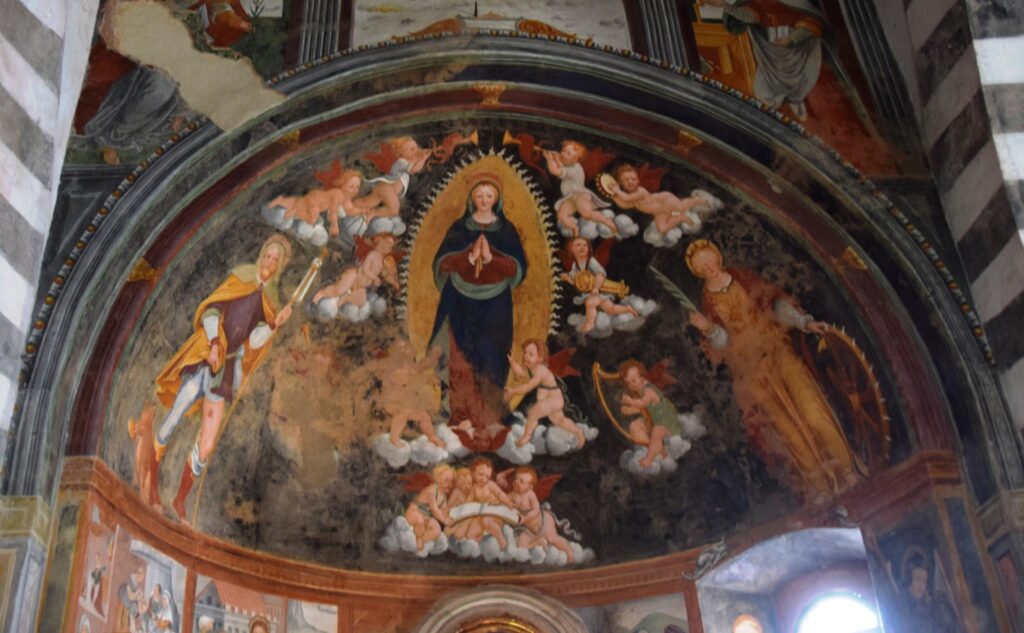
Madonna altar: Mary ascended to Heaven inside the mandorla. This is my favorite Madonna.
The interior of the Chiesa di San Giacomo Vecchia abounds in artwork on the walls, ceiling, and window surrounds. Even the building’s trusses are painted – a decoration meant to resemble the black and white local marbles of Lake Como that one finds for real in the Romanesque Church of Santa Maria del Tiglio in much wealthier Gravedona.
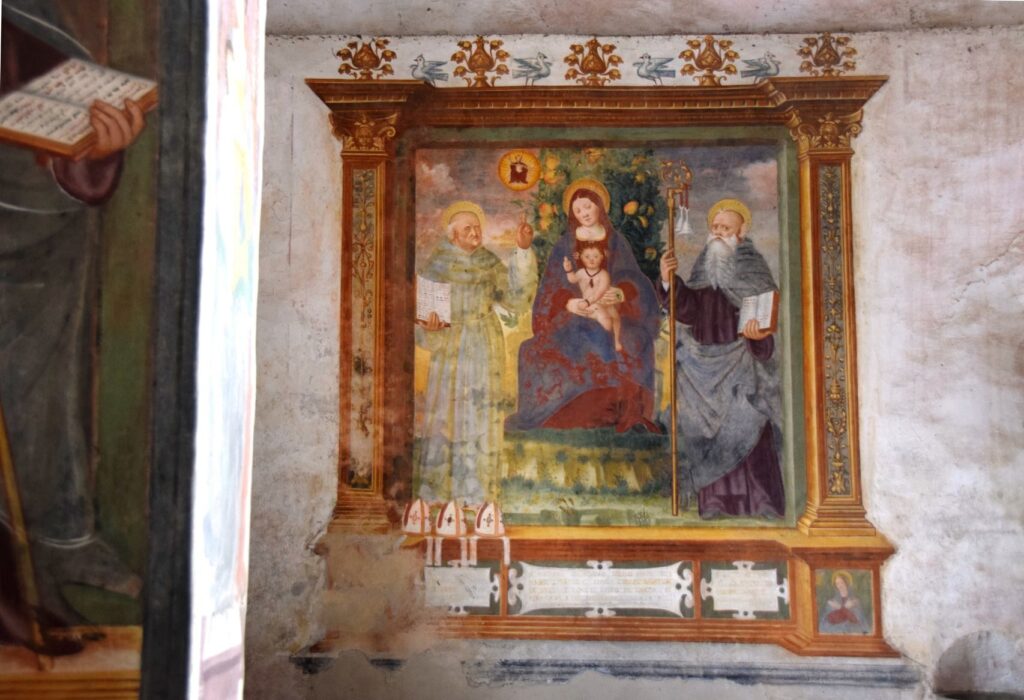
This painting of the Madonna and Child with St Ambrose to the right had multiple patrons who paid the artist. Their names are under the figures for which they paid.
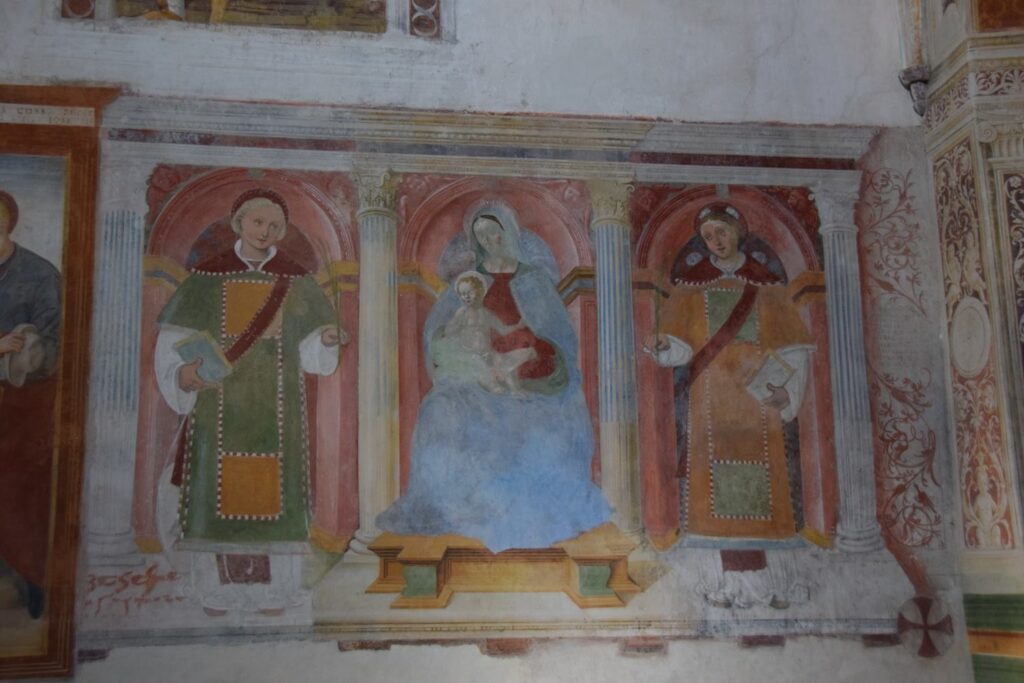
A Madonna and Child with two popular local Saints. These are St. Gervasius and St. Protasius – Milanese twins and 2nd century Christian martyrs. They are popular in Lombardy as the patron saints of haymakers.
As I traveled the interior of the church I saw visages worthy of a Raphael next to images that looked like a child rendered them. This is both the charm and magnificence of this church. The adoration, devotion, and love of the local people cover the walls! The colorful Madonna’s are the voice of the peasants – the contadini – who lived and loved and died here in this lush valley overlooking the lake. The images of Mary absolutely host the passionate worship of their God and the veneration of his mother through whom they seek intercession and from whom they seek protection – against suffering and the loss of happiness.
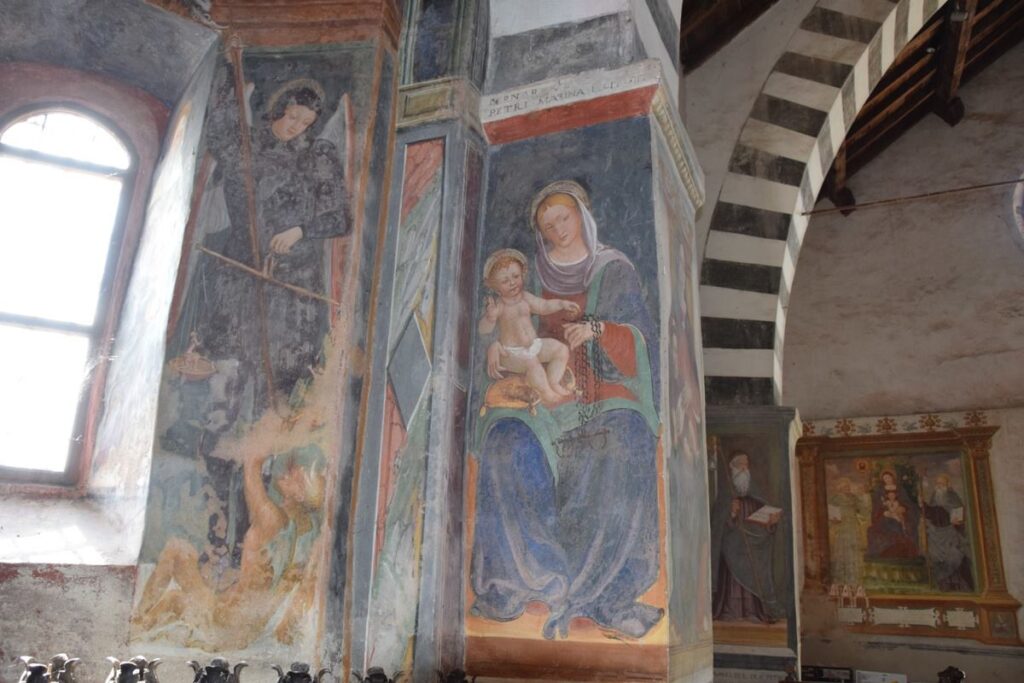
Madonna and Child – St Michael the Archangel is to the left driving Satan into Hell.
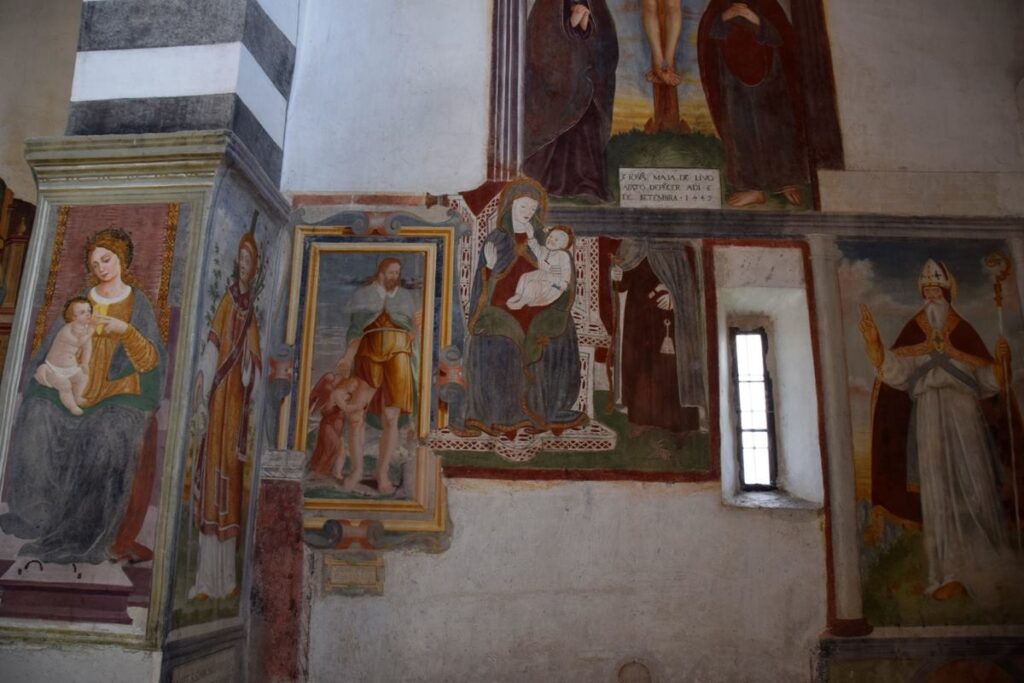
Madonna frescoes, a crucifixion, and a bishop to the right. St Rocco is to the left of the central Madonna. A Madonna del Latte (a nursing Madonna) is to the far left.
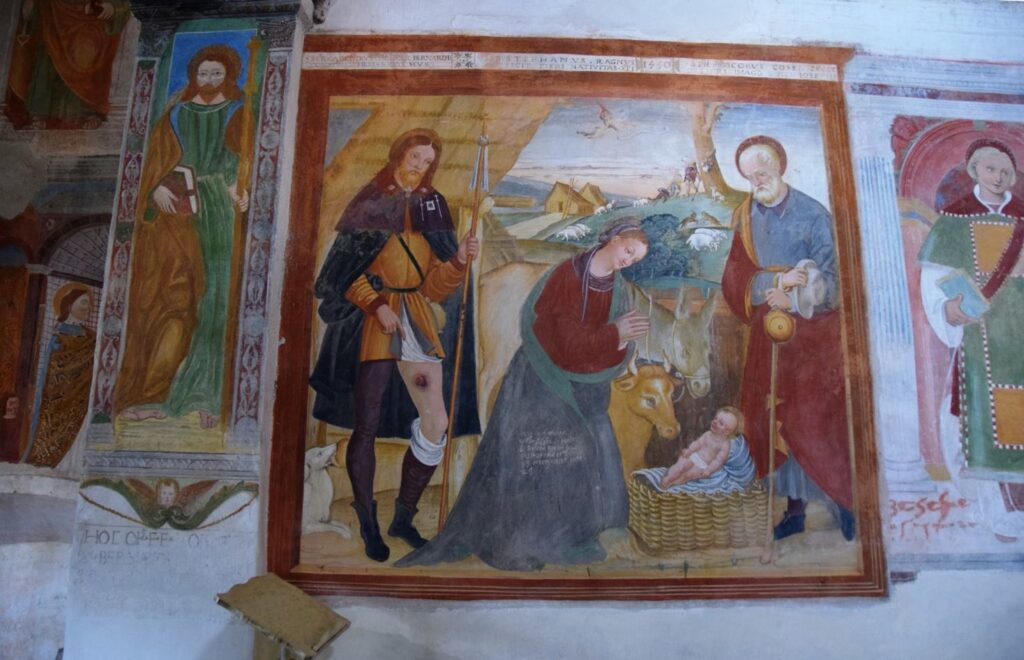
A nativity scene with St Joseph to the right and St. Rocco to the left.

St Job, the patron saint of silkworms and silkworkers (the archaic name for a silkworker was setaiuola). This area of Italy was where silk worms were grown by the peasant women. This is the only image of St Job I have ever encountered in a church. This fresco was painted in 1523.
The grand lake and ancient towns with their intriguing histories and the lavish artwork of their churches bring me back to Lombardy every year. If you visit Italy I fervently urge a trip to Lake Como and an excursion to the churches of the Val di Livo. The Madonna’s of Livo have recently been restored.
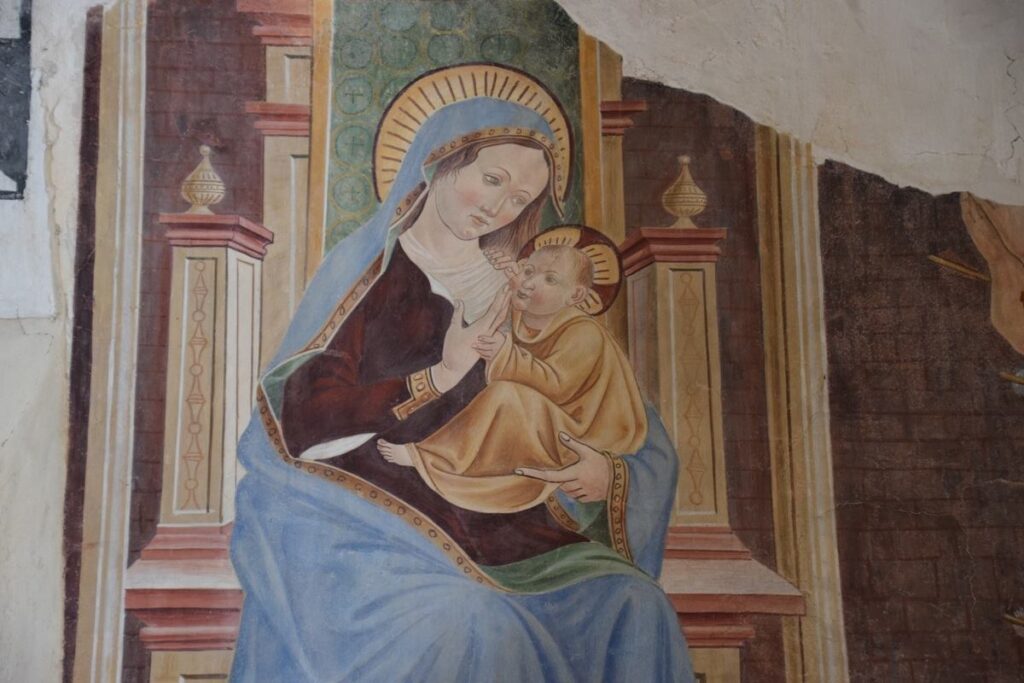
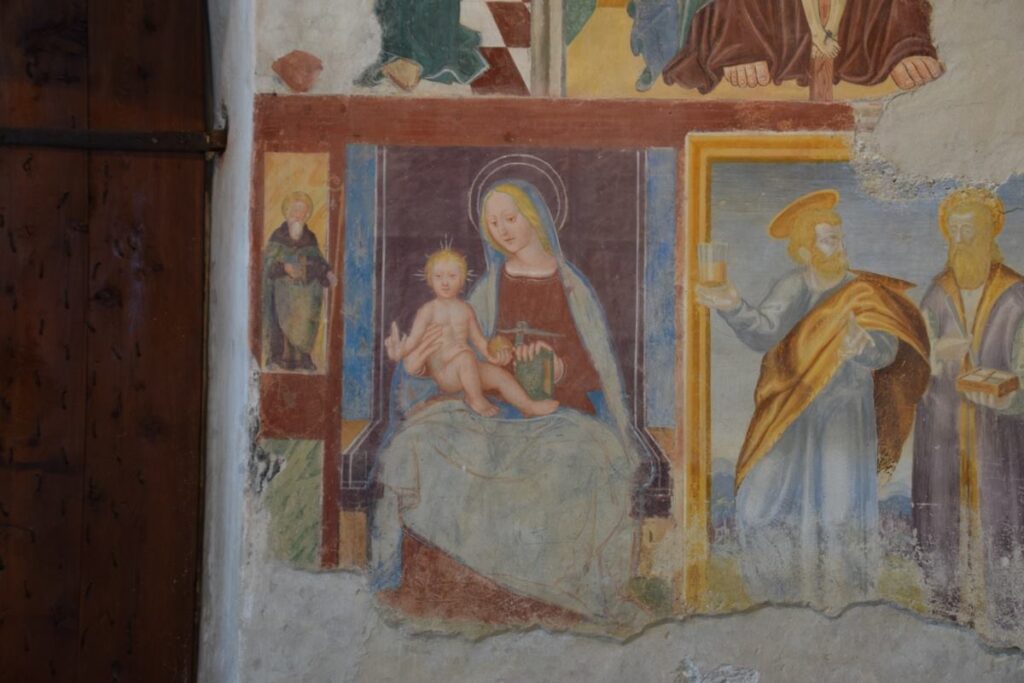
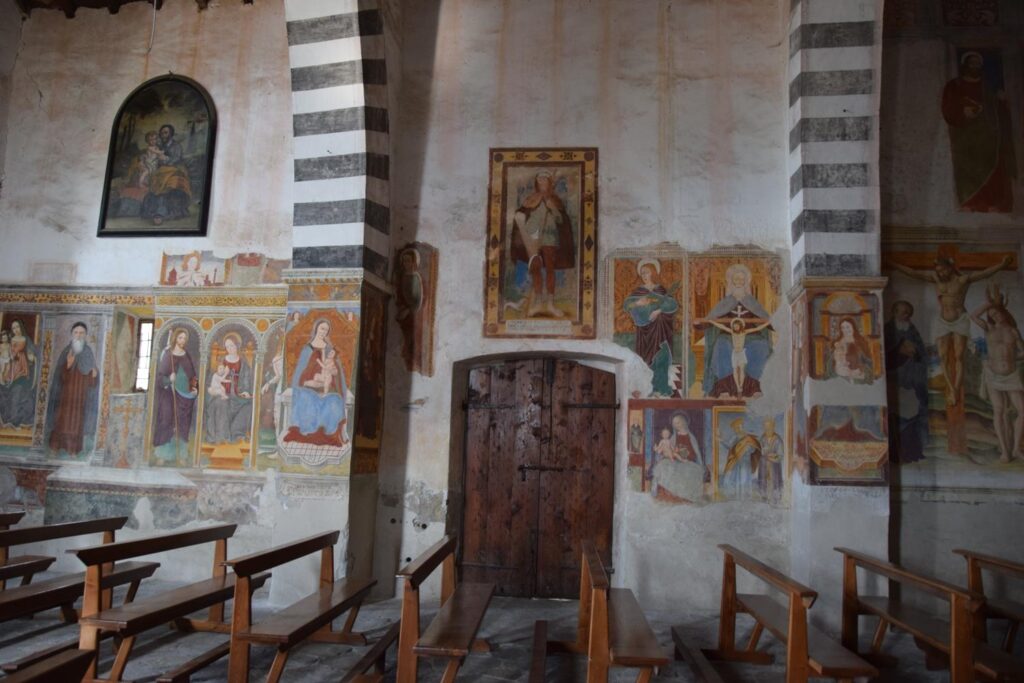
The prominence and importance of St Rocco in this area who protects against the plague is evidence. He is always depicted with a small pet dog and pointing to the bubonic plague boil on his leg.
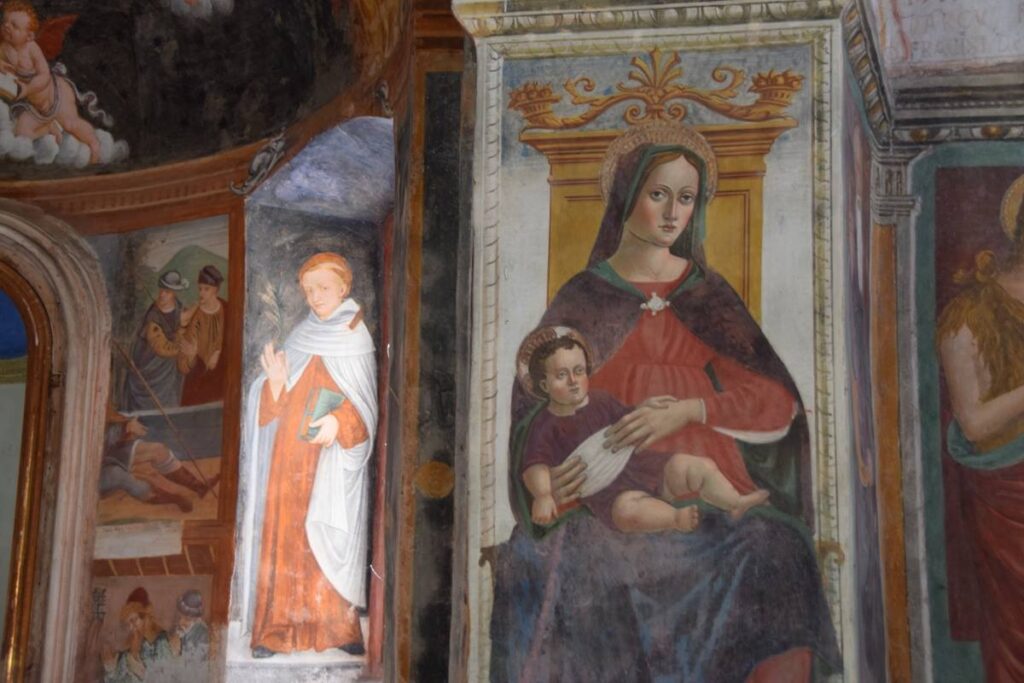
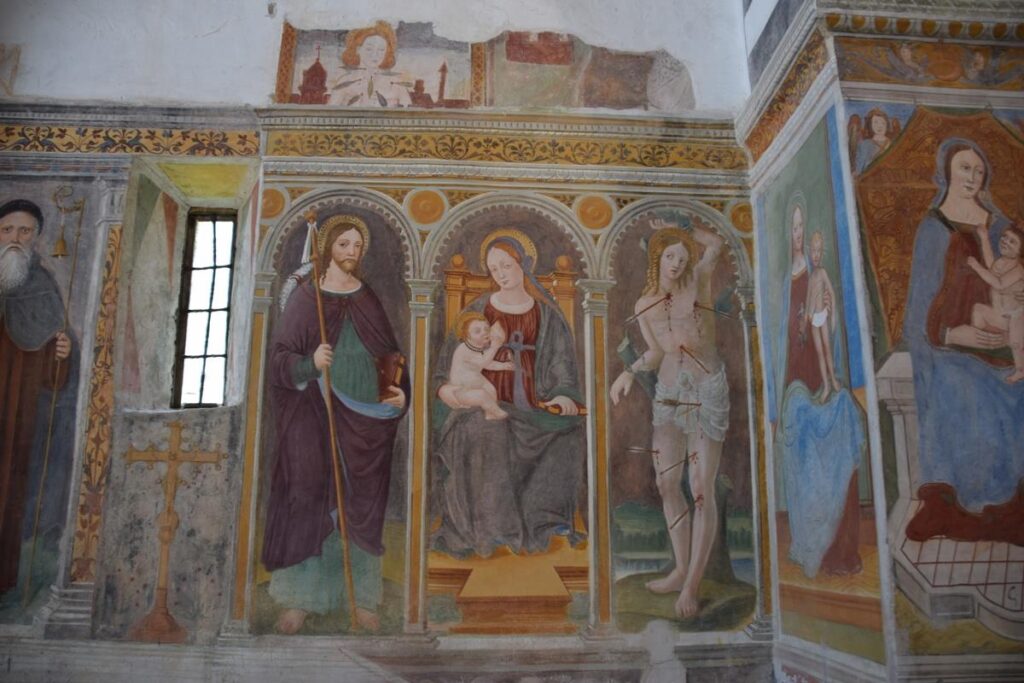
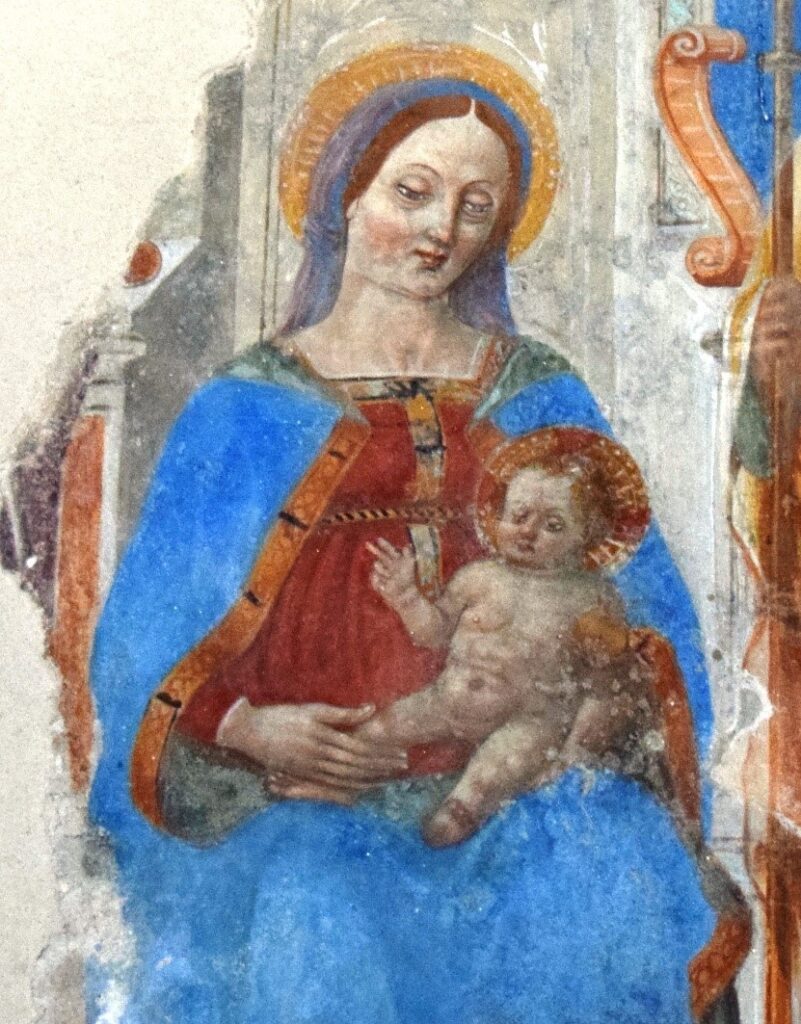
The blue cloak of Madonna signifies Heaven and eternal life and the red gown signifies ‘earth’ of secular life.
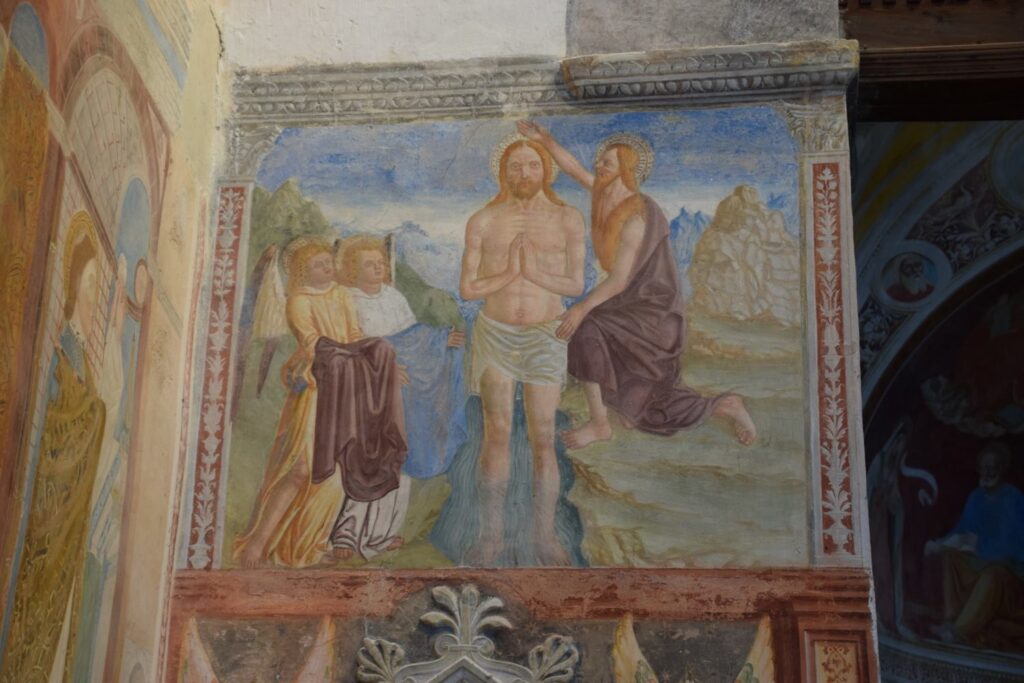
Perhaps the town will offer visiting hours for the public soon and you will not need an appointment or a guide! I hope so and I hope my few words and pictures conveyed some of my joy and love for the art and the people of Italy – especially the lovely town of Livo and their exquisite Madonna’s. Ciao!
Virginia Merlini

